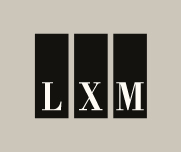I recently came across a video from Alex Benay, ex-Chief Information Officer of Canada’s federal government, entitled “Why are we using industrial age purchasing processes in a digital age?” Alex is right to ask the question. Traditional public procurement rules don’t lend themselves well to the purchase of digital solutions. Here’s what he had to say:
One reason it’s difficult to put the procurement square peg in the round hole of IT solutions is that technology is in a constant state of evolution. What’s specified in an RFP today may have evolved by the time the contract is awarded. Additional challenges associated with IT solutions and, in particular, commercial off-the-shelf IT solutions, is that they:
- are normally not customizable – sold “as is, where is”
- may be sold based on different technology architectures/options (SaaS, on-premise installation, other)
- may be offered based on different licensing and pricing structures (perpetual, subscription)
- suppliers may not be open to contracting on government terms
In the government procurement world where product evaluations require apples-to-apples comparisons, how does one put each IT product on the same playing field?
This is where knowledgeable procurement professionals can really add value for an organization, helping with the development of an appropriate RFx, guiding decision-making on product requirements, and shaping the procurement process to offer the flexibility needed to accommodate all these challenges.
Adding flexibility to the public procurement process
With regard to adding flexibility to the procurement process, in recent years we’ve seen trends emerge in the procurement of complex IT solutions that incorporate flexibility in what has traditionally been an inflexible process.
These procurement processes are normally designed as non-binding RFP processes that involve an information gathering phase, such as a market study, RFI or market sounding process inviting discussions between suppliers and procuring entities. The processes will often provide for a multi-phased evaluation and may include a best and final offer. Usually, but not always, the final contract will be negotiated based on the supplier’s standard terms.
Competitive dialogue RFP
One innovative process that has gained recognition in Ontario and elsewhere is the competitive dialogue RFP. A competitive dialogue procurement allows the procuring entity to thoroughly discuss each aspect of the procurement with suppliers prior to defining their requirements and prior to issuing an RFP document. That gives the procuring entity the opportunity to thoroughly understand market offerings and industry norms before publishing their requirements, ensuring the RFP resonates well with the market. This approach lends itself well to the procurement of IT solutions.
Another unique process I’ve recently encountered is the federal government’s agile procurement process which is being used in the procurement of the Canada School of Public Service’s new learning management system and will also be used in the procurement of the federal courts court and registry management system.
Federal government agile procurement process
In this process, steps one and two involve a traditional binding RFP process. At the third step, an actual contract is awarded to the bidders for a modest amount that pays for the development of a prototype. The contract has an option for full implementation that will only be exercised with the contractor whose product and proposal ranks #1 following a multi-stakeholder evaluation process.

In step four, the capability and usability assessment, a large group of stakeholders from various categories, e.g. technology personnel, internal user personnel and public users, are called upon to evaluate each prototype. The model encourages enlisting many people in each group to ensure the results fairly represent how each group of users would rate each product.
The successful supplier/product is finally selected based on a formula that includes all the scores from previous steps. The contract award at this stage is simple as all it involves is an exercise of an option that is already provided for in the contract awarded in step three.
Are organizations using industrial age purchasing in a digital age?
I would encourage Mr. Benay to take heart in what we’re seeing. A quick scan of current practices in public procurement will reveal many examples of innovation in the procurement of IT solutions, as we see procurement toolkits expand to meet the rapidly changing technological landscape. While the competitive dialogue RFP and agile procurement process are clearly not appropriate for every technology purchase, these innovative approaches provide a great roadmap for engaging expert vendors with real-time solutions while allowing end users and other stakeholders to have important input to any final selection.

